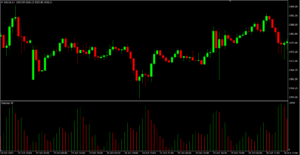The Federal Reserve Chairman’s Statement
The Federal Funds Rate news that once pushed gold prices to \$2,200! What is this news about, and why did gold prices surge so high? Today, I’ve put together a simple summary for traders to follow easily.
The Federal Funds Rate is the interest rate at which one bank lends its excess reserves to another bank overnight without collateral.
Normally, U.S. banks already have circulating funds to handle various transactions for their customers. However, to increase security and prevent risks such as fraud or robbery that could cause a lack of funds for customer transactions, the Federal Reserve (FED) has implemented a policy requiring banks to hold reserves with the FED. This serves as a guarantee that the bank has sufficient capital to cover transactions and other obligations.
Generally, banks tend to have more reserves than necessary. These excess reserves can be lent to other banks in the Federal Funds market. Although a portion of the reserves is held as a safeguard with the FED, banks can still lend the excess reserves to other banks on an overnight basis.
If this explanation still feels unclear, I’ll provide a scenario example to help illustrate the concept more clearly.
What is Federal Funds Rate ?
Bank A checks and finds that it has excess reserves for the day. This is money that Bank A is required to hold with the FED, but after setting aside the required amount, there are still reserves left over. Instead of letting that excess money sit idle, Bank A decides to lend the surplus to Bank B on an overnight basis. The process goes as follows:
Bank A: Let’s say Bank A has $100 in excess reserves (emphasis on excess). It wants to lend this amount overnight to other banks, so it offers the money to Bank B.
Bank B: Bank B needs additional reserves to meet the FED’s reserve requirements, so it agrees to Bank A’s terms and promises to repay the loan with interest the next day.
Federal Funds Rate: The interest rate that results from Bank B borrowing overnight from Bank A is known as the Federal Funds Rate. This rate is determined by the supply and demand for reserve funds in the federal funds market.
Transaction Execution: Bank A transfers $100 to Bank B’s account at the FED. In return, Bank B agrees to repay the full $100 plus interest the following day.
Repayment: On the next day, Bank B repays the $100 loan along with the agreed-upon interest.
The example above illustrates how banks can lend excess reserves held at the FED to one another, with the Federal Funds Rate serving as the interest rate for these overnight loans.
Wtat is FOMC Economic Projections, FOMC Statement and FOMC Press Conference?
In addition to the Federal Funds Rate announcement, there are usually three accompanying meetings: the FOMC Economic Projections, the FOMC Statement, and the FOMC Press Conference. I’ll explain the meaning of these “three musketeers” for you.
FOMC Economic Projections: These are the Federal Open Market Committee’s (FOMC) economic forecasts, including projections on GDP growth, unemployment, and inflation. They are released quarterly to inform policymakers and the public about the economic outlook. Typically, there are four projection releases per year.
FOMC Statement: This is an official statement issued by the FOMC summarizing its policy decisions, including changes in interest rates and the reasoning behind them. It is released after each of the eight regular meetings held annually.
FOMC Press Conference: This is a press conference held by the Chair of the Federal Reserve following the FOMC meeting. It provides further explanation of the Committee’s decisions and includes a Q\&A session with the media. These conferences are usually held eight times per year.





